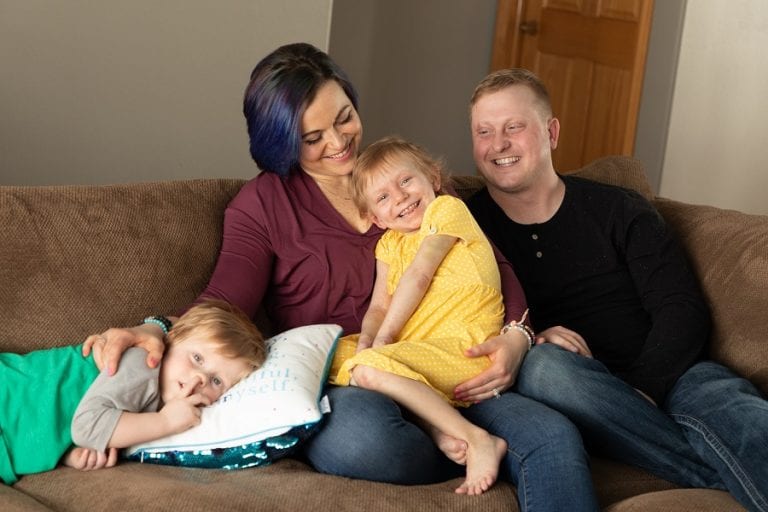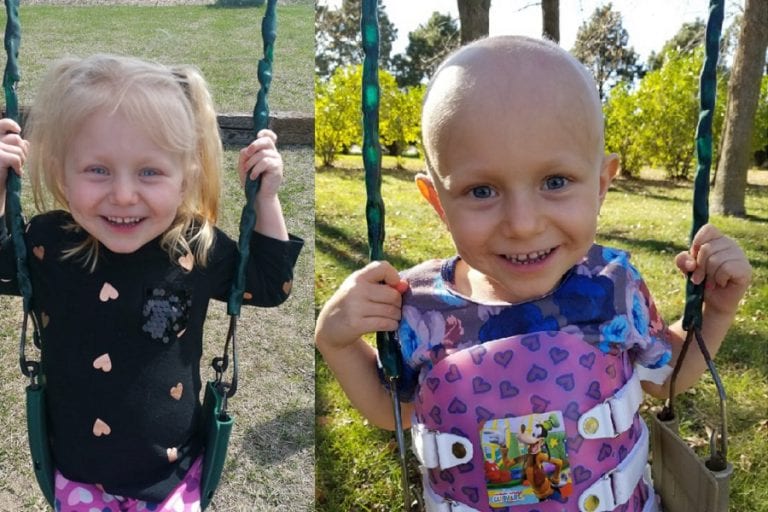Dexter
Neuroblastoma Survivor
We first met Dexter at Minneapolis’ Ronald McDonald House. Eight years old at the time, he sat cross-legged on the living room couch prepared with his white, netted radiation mask and his long strings of Beads of Courage, beads used to commemorate the milestones he’s achieved through his treatment.
That day, Dexter didn’t just tell us how it was to have cancer — he showed us.
Thoughtful and articulate, he explained his treatment with each bead, holding them between his small fingers and explaining what they meant:
Yellow for radiation. He had to be in isolation for three days. “I was trapped in a box, and I had to talk to my parents through a camera,” he said. The radiation was too dangerous for his mom and dad to be in his room for long.
Red for transfusions. Each bead marked the needles inserted into Dexter’s small blood vessels.
White for chemotherapy. A total of six long rounds. His mom, dad and older brother, Mat, sat close by his hospital bed, watching TV with him and holding his hands.
Strung together, the beads took up the width of the living room — a myriad of colors indicating Dexter’s trials and triumphs: Surgeries to remove an 8-inch tumor by his kidney, a stem cell transplant to restore his immune system and a cocktail of medications to kill the cancer — 16 tumors that doctors found throughout his body.
Dexter was the fifth child at the University of Minnesota to receive a type of treatment called MIBG, a compound used in combination with radiation. This therapy destroys tumors while sparing normal, healthy tissue.
“Doctors had to come in with a Geiger counter to make sure his radiation levels were safe,” said his dad, Manny. “They threw away all the toys in the room with him because they were too radioactive to be played with.”
But not even Dexter’s least favorite treatment — taking pills — diminished his smile or knack for funny faces. “You would be hard-pressed to find a more determined 8-year-old, and I am not just saying that because he’s my child,” said Manny.
The traditional neuroblastoma treatments didn’t work effectively for Dexter. So this past winter, he was put on mix of pills, infusions and shots.
His prognosis was a 20 percent survival rate and doctors told Manny and Dexter’s mom, Jenny, that the new treatment had a 20 to 50 percent chance of working. “The way I see it is that I have Dexter 100 percent today,” Manny told us. He focuses on staying present and providing all the new experiences for his son that he can.
A few months after our meeting, Dexter finished up his treatment and reunited with his four cats and Newfoundland dog. A self-described “Star Wars nerd,” one of his cats is named Jabba. “He’s 27 pounds!” he told us, excitedly.
Though enjoying being home, Dexter has a high chance of the neuroblastoma coming back. “[It’s] hard to swallow,” said Jenny. “If it does come back, there is very, very little chance he’ll survive.”
This past spring Dexter had his first scans to see if the cancer had indeed come back. They came back clear: no evidence of disease.
Then this summer, Dexter and his family held their breath for the next set of scans. And again they came back clear.
“The radiologist said he will get some kind of cancer because of the treatments,” said Jenny. “We’ll fight if a different cancer comes. It’s a hard adjustment getting back to normal life, but right now we’re living in the bliss that is no evidence of disease! That’s really all we can do. And we’re having fun doing it!”




